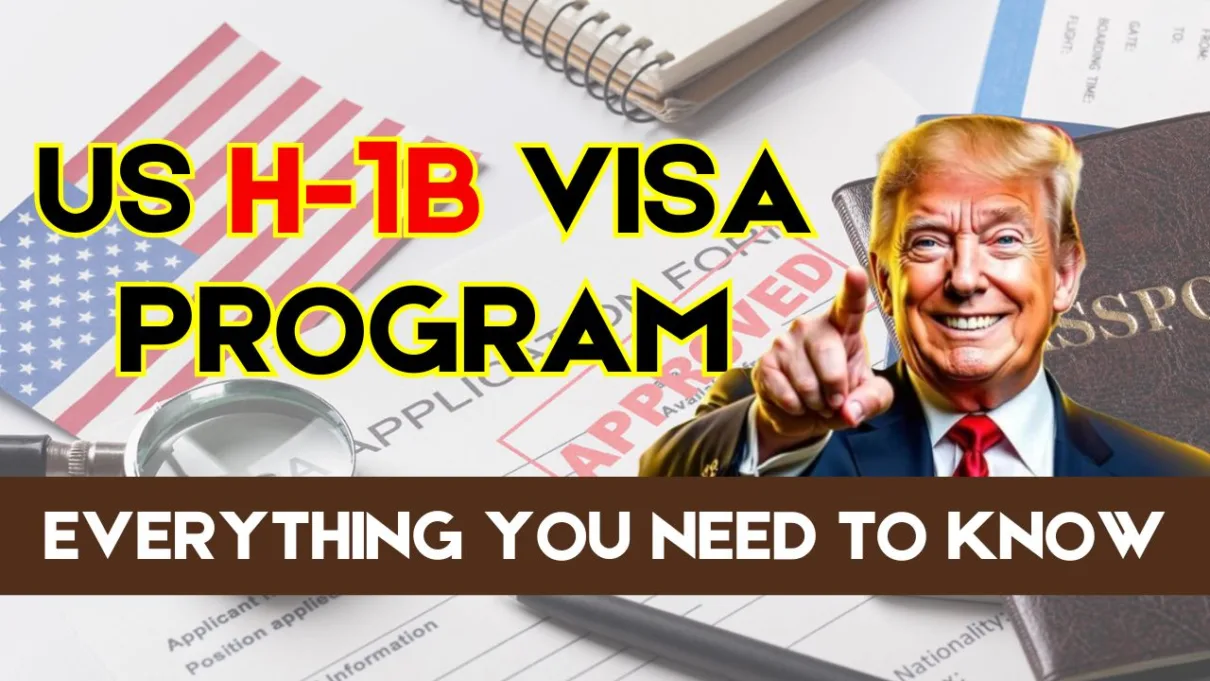US H-1B visa program: In the weeks leading up to Donald Trump’s anticipated return to the presidency, a rift has emerged within his supporter base regarding the US H-1B visa program, which facilitates the employment of skilled foreign workers in the United States. This discord intensified following the appointment of Sriram Krishnan, a venture capitalist from Chennai, as Trump’s chief adviser on artificial intelligence.
Current analysis indicates that Trump appears to align himself with the DOGE faction, which includes prominent figures such as Elon Musk and Vivek Ramaswamy, in the ongoing debate surrounding the US H-1B visa program. Notably, Trump has publicly expressed his longstanding support for H-1B visas.
US H-1B Visa Program Explained
As the inauguration date of January 20 approaches, a significant conflict has surfaced between two factions of Trump supporters: DOGE (Department of Government Efficiency) and MAGA (Make America Great Again), particularly concerning allegations of misuse of the US H-1B visa program by Indian nationals. Despite Trump’s apparent backing of the DOGE group, Musk has acknowledged that the H-1B visa system is fundamentally flawed and in need of substantial reform.
Currently, Trump appears to be aligning himself with the DOGE team, which includes prominent figures such as Elon Musk and Vivek Ramaswamy, in the ongoing debate regarding the visa program that facilitates the entry of skilled workers into the United States. Notably, Musk, the CEO of Tesla, has acknowledged that the US H-1B visa program system is “broken” and requires “major reform.”
In a surprising turn, Trump has engaged in this discourse, expressing that he has “always liked” H-1B visas and has employed guest workers through this program, despite having previously criticized it. This stance has left his MAGA supporters in a state of confusion.
PM Kisan 19th Installment Date, KYC Process, Status & Beneficiary List
(SSPY UP) UP Pension Scheme 2025 Check Eligibility & Online Registration Process
key highlights of the US H-1B visa program, point-wise:
Purpose: Allows U.S. companies to hire foreign professionals for specialized positions in fields like STEM (Science, Technology, Engineering, and Mathematics).
Eligibility: Applicants must have at least a bachelor’s degree or its equivalent in the relevant field.
Annual Cap:
- 65,000 visas available each year.
- An additional 20,000 visas for individuals with advanced degrees from U.S. institutions.
Duration:
- Initially valid for three years.
- Can be extended up to a total of six years.
Post-Visa Options: After six years, individuals must leave the U.S. or pursue permanent residency.
Exemptions: Nonprofit organizations and research institutions are exempt from the annual cap, offering greater flexibility in hiring.
Nationality: Since 2015, Indian nationals have made up over 70% of H-1B visa recipients, with Chinese nationals following at about 12%.
Criticism: The program faces criticism from anti-immigration groups, who argue that it negatively affects American workers by allowing companies to hire foreign labor at lower wages.
Importance: Crucial for addressing skill shortages in high-demand industries, particularly in tech and engineering fields.
The resentment surrounding the H-1B visa program, particularly in the context of the Trump administration’s evolving stance on immigration, can be broken down into several interrelated factors:
Sriram Krishnan’s Nomination: The nomination of Sriram Krishnan, an Indian-origin venture capitalist, to lead AI policy in the Trump administration sparked significant backlash. His past social media statements advocating for relaxed green card restrictions for skilled workers, particularly from India, stoked resentment among anti-immigration critics. They accused him of prioritizing India over the U.S. workforce, framing his stance as part of a broader “India First” agenda.
SBI e-Mudra Loan 2025 Apply Online: Check Eligibility, Documents & Step-by-Step Process
PNB Mudra Loan within 5 minutes [10 lakh], Eligibility, Required Documents & Way to Apply?
MAGA Criticism: Right-wing figures like Laura Loomer criticized Krishnan’s appointment, accusing him of neglecting American workers in favor of global talent, particularly from India. This criticism reflects broader concerns within the MAGA (Make America Great Again) movement, which has traditionally supported stricter immigration controls, especially in terms of employment-based visas.
Conflict within Trump’s Coalition: There is a noticeable divide between Trump’s tech-advisor supporters, such as Elon Musk and Vivek Ramaswamy, who are pro-immigration, and the more hard-line, anti-immigration wing of the Republican Party, largely represented by MAGA supporters. This conflict highlights the tension between those who view immigration as crucial for economic and technological growth, and those who fear it undermines American jobs and wages.
Musk and Ramaswamy’s Stance: Both Musk and Ramaswamy have defended the H-1B visa program, arguing that U.S. companies, especially in tech, rely heavily on foreign talent, particularly from India, to meet a “permanent shortage” of engineering expertise. Musk’s endorsement of recruitment based on talent, rather than nationality, underscores his belief in the global nature of innovation and competition.
Business vs. Nativist Concerns: As a businessman, Trump has historically understood the value of programs like H-1B in providing a skilled workforce to the U.S. economy. However, his past opposition to such visa programs was primarily driven by concerns over foreign labor displacing American workers. This put him in conflict with more nativist elements of his base. Trump’s current stance appears more focused on addressing illegal immigration rather than closing legal immigration channels, such as H-1B, which might be seen as a strategic move to maintain support among both his business-oriented and hardline supporters.
HDFC Life Investment Plans: Now Your future is secure and bright!
Reform vs. Shutdown: Some argue that Trump might look to reform, rather than completely shut down, programs like H-1B. This would allow him to balance his broader immigration agenda (focusing on illegal immigration) with the realities of America’s dependence on foreign skilled workers in certain industries.
Cultural and Economic Friction: Many MAGA supporters, particularly those who have ancestral roots in the U.S., exhibit a deep-rooted fear of competition from immigrants. This is tied to economic insecurities and cultural concerns, seeing the influx of foreign workers as undermining their opportunities in the workforce. This is especially relevant in tech, where foreign professionals, particularly from India, have come to dominate high-skilled roles.
Failure to Acknowledge Skill Gaps: The resentment also arises from a perceived lack of understanding of the U.S.’s actual needs. While anti-immigration advocates fear competition, research shows that industries like technology face significant skill shortages that can only be addressed by importing talent, particularly engineers and tech professionals from countries like India.
Indians’ Prominent Positions in the U.S.: Indians, though only 1.5% of the U.S. population, are increasingly occupying high-profile roles in fields such as medicine, technology, and leadership. The data shows that about 73% of H-1B visas are issued to Indian nationals, further emphasizing their critical role in shaping America’s technological and scientific sectors. This disproportionate representation has led to both admiration for their skills and resentment from those who see it as threatening to the domestic workforce.
Economic Contribution: Research suggests that Indian professionals contribute significantly to the U.S. economy, particularly in high-income sectors. However, their growing presence also triggers resistance from those who see their success as a reflection of the broader immigration system’s impact on domestic workers.
‘America Beckons, But Americans Repel’: This immigrant proverb encapsulates the emotional and cultural conflict at the heart of the immigration debate. While America has historically relied on immigrant labor to build its economy, particularly in sectors like manufacturing and agriculture, today’s debates focus on skilled labor in industries like technology. The resentment often stems from a sense of cultural displacement or a perceived threat to the job market.
Conclusion
The debate over the US H-1B visa program is not just about economics but also deeply tied to identity, competition, and the changing demographic makeup of the U.S. On one side, proponents argue that foreign talent is necessary for maintaining America’s leadership in technology and innovation.
On the other, critics fear that this influx undermines American workers and reshapes the cultural and economic landscape in ways that threaten their perceived dominance. As Trump navigates this contentious issue, he faces the delicate task of balancing the demands of his diverse supporter base, from pro-business immigrants to hardline nativists.

